At just under a three-hour drive from either Portland or Seattle, it’s easy to access Washington’s stunning Mount Rainier National Park, the highest point in the Cascade Mountain Range. I recommend that your Mount Rainier itinerary include at least one day, preferably two, and you can take a third day if you don’t mind some extra drive time for lesser-known sites.
The acclaimed conservationist John Muir famously called this park: “the most luxuriant and the most extravagantly beautiful of all the alpine gardens I ever beheld in all my mountain-top wanderings.”
Considering the competition, that’s quite the endorsement!
That’s probably because Mount Rainier, an active volcano, is covered by 26 named glaciers—the most heavily glaciated peak in the lower 48 states. When you add in the summer wildflowers it honestly doesn’t get much better!
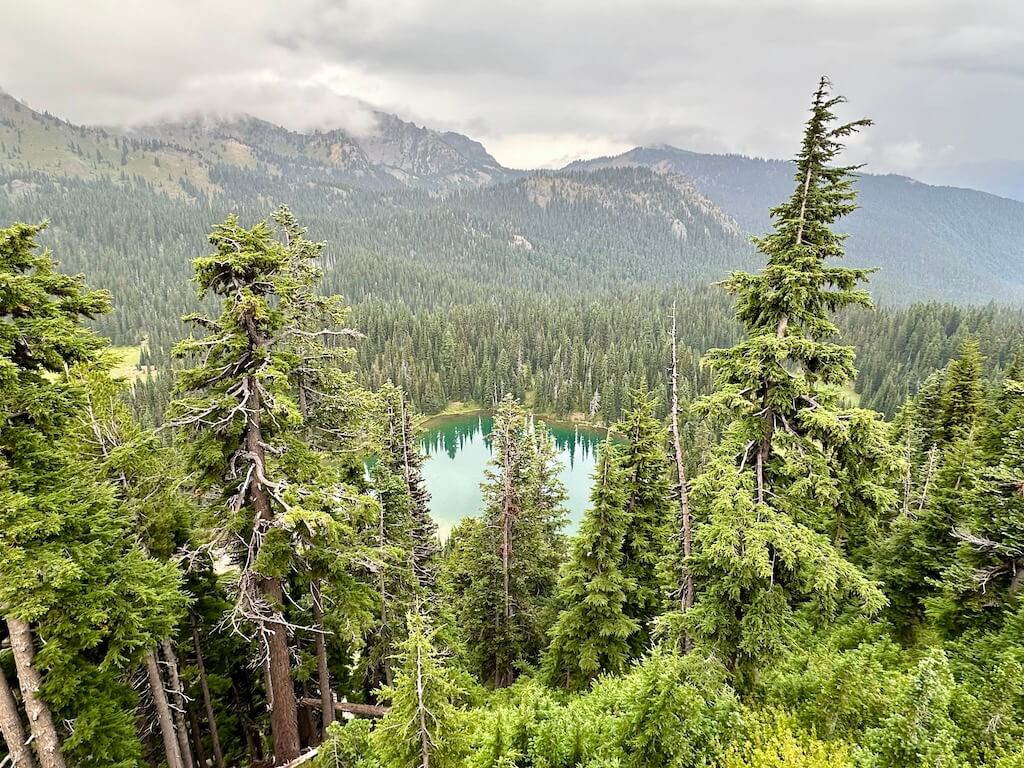
Contents
Your Mount Rainier Itinerary
When is the best time to visit? The park is accessible all year long.
You’ll find fewer crowds off-season and fall can be pretty with the changing leaves in October.
We visited two weeks after “prime peak” for wildflower viewing and I highly recommend it.
We saw dozens of gorgeous subalpine wildflowers. To see even more variety, try to time your visit for the beginning of August.
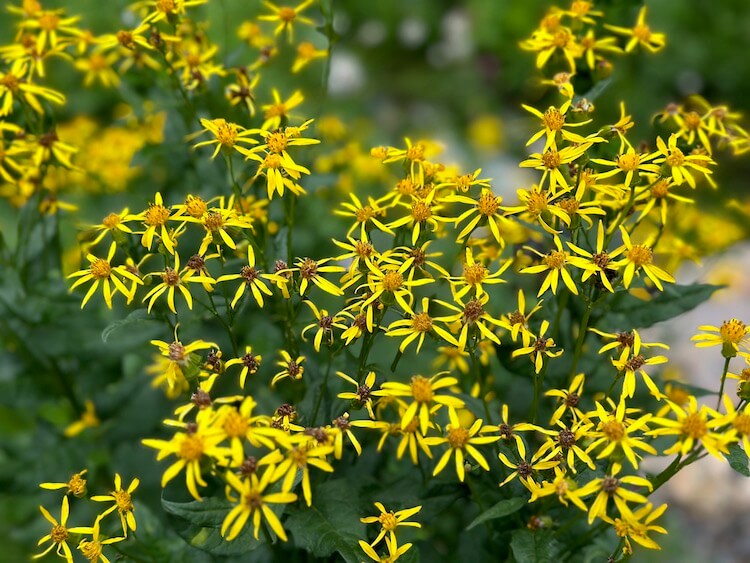
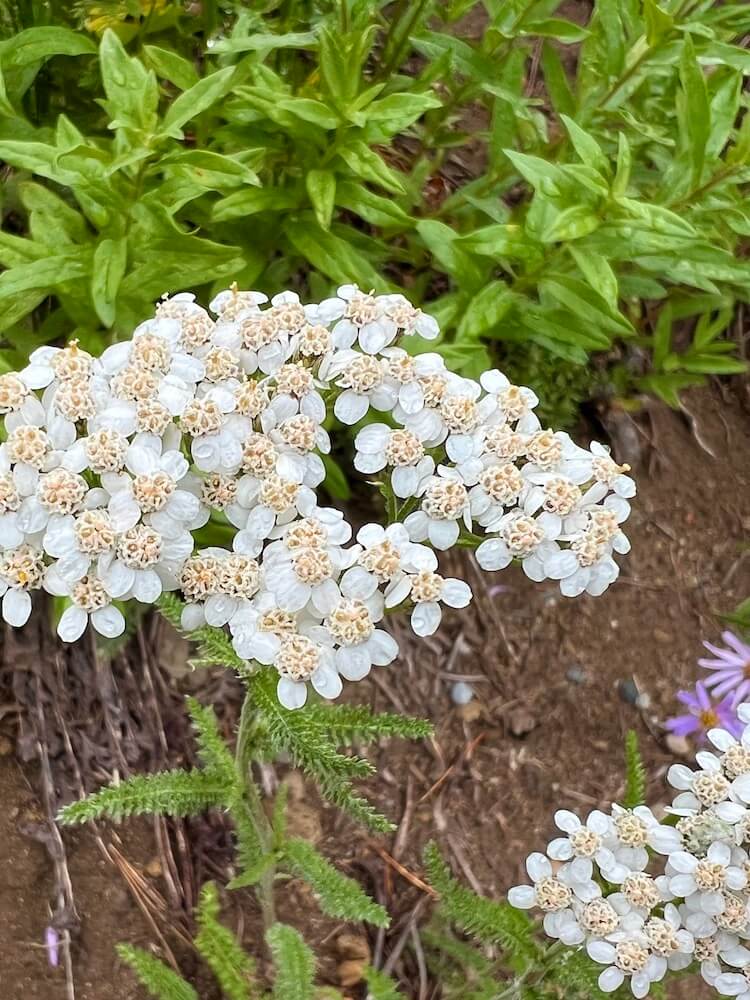
Plan Your Visit
It’s important to understand that, unlike many other popular U.S. national parks, you can’t access the whole park by looping through it.
There are four separate entrances—each offering access to a different park “corridor.” That’s because Mount Rainier itself sits smack in the middle of the park.
The entrances are:
• Nisqually Entrance (southwest entrance) for the Paradise Corridor
• Stevens Canyon Entrance (southeast entrance) also for the Paradise Corridor
• White River Entrance (northeast entrance) for the Sunrise Corridor
• Carbon River Entrance (northwest entrance). Only open to foot traffic past the entrance.
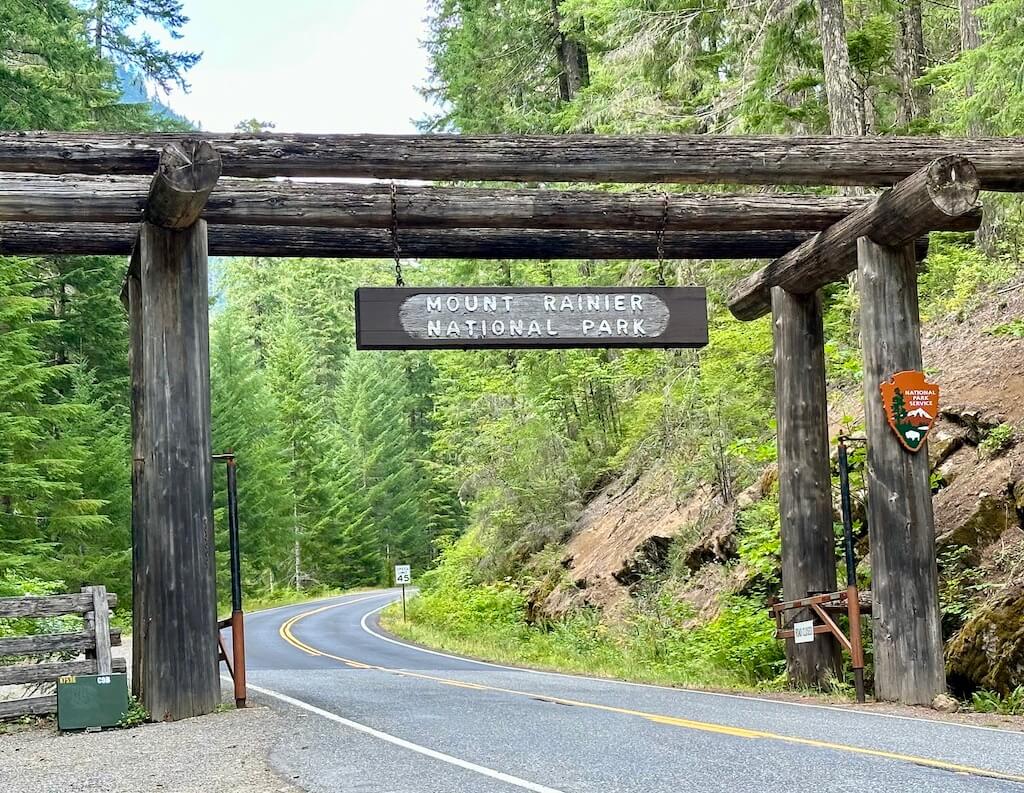
You’ll need a reservation for the Paradise and Sunrise Corridors.
Be sure to secure your reservation online many months ahead or prepare to be turned away at the park entrance.
Reservations for both corridors are required between late May and early September ($2 plus a $30 per vehicle park entry fee unless you have an annual National Parks pass.)
Reservations are for “timed entry”, meaning that you must arrive within the two-hour window you reserved. (And those rangers are serious: They’ll turn you back if you’re 5 minutes late.)
Tickets for reservations are released in blocks. Can’t get the date or time you want? Limited additional reservation tickets are released nightly for next-day entry; just pop onto the reservation site at 7 pm the evening before your desired date and try your luck. (This worked for us!)
You won’t need a reservation if you’re staying in the park at Paradise Inn, arriving before 7 am or after 3 pm, or a few other special circumstances. See the reservation link above for complete details.
Wilderness camping permits are also required.
Map of Mount Rainier Itinerary
How to use this map: This map is an image. Click the map to open an interactive version of the map. From there, if you click “open in my maps”, you can add this to your Google maps. Just click the tiny transparent star to the right of the map description to save it in “your places.” Go to “your places” next and there it is!
Mount Rainier Itinerary: Day 1—The Paradise Corridor (Stevens Creek Entrance)
If you have just one day in the park, spend it in Paradise!
You can base in either Ashford or Packwood if you’re not camping. (See “where to stay” below.)
We stayed in Packwood and found it a convenient base for our two-day visit to the Paradise and Sunrise Corridors.
Follow this Day 1 itinerary by heading to the Steven Canyon Entrance.
(You’ll do this itinerary backward if you’re staying in Ashford by heading to the closer Nisqually Entrance. Note that the Stevens Canyon Road entrance is only open from late June to September.)
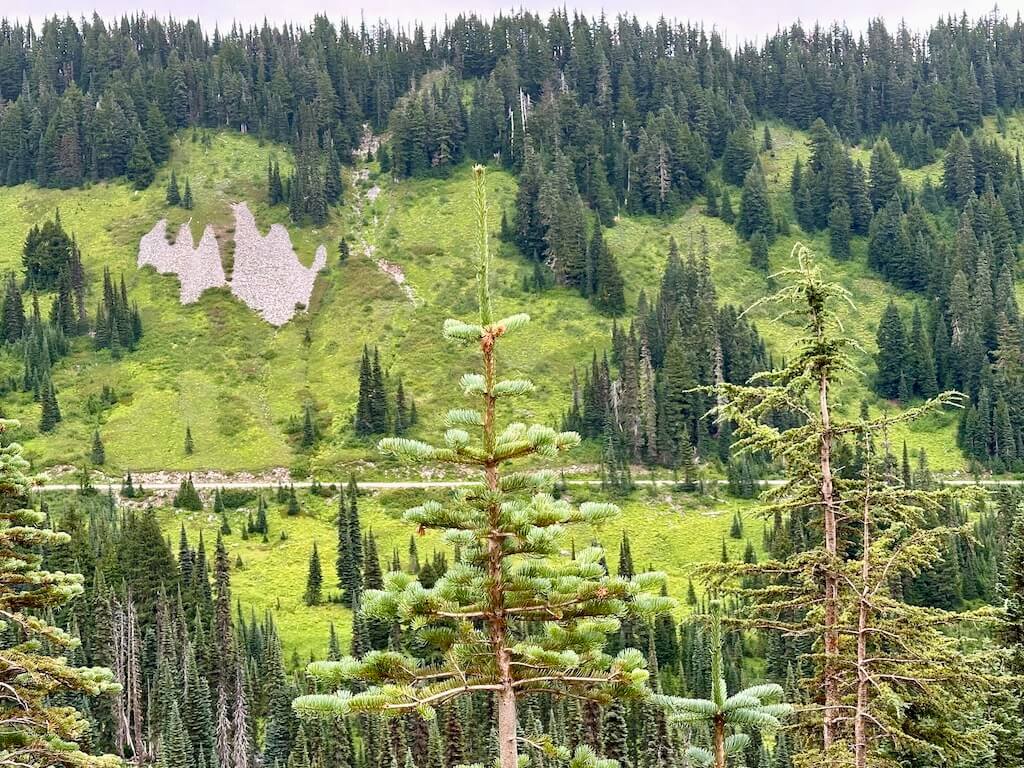
1. Start Your Day at Reflection Lakes
Located right on Stevens Canyon Road, Reflection Lakes is a favorite for photographers.
In fact, many visitors love to watch the sunrise here over iconic Mt. Rainier. It can make for stunning photos…if you’ve got a beautiful clear sky.
Just be aware that mountain weather can roll through any time of year.
When we were here in August, Mount Rainier was obscured with heavy cloud cover for almost our entire visit!
Nonetheless, as long as you’re here in summer, you can get views like the one below (or better on a clear day!) from your car.
Optional hike: Park on the road and hike down to the lake to find a loop trailhead.
You’ll find wildflowers like paintbrush, yellow arnica, lupine, and Western pasqueflower here in summer.
It’s a great spot for snowshoeing in winter!
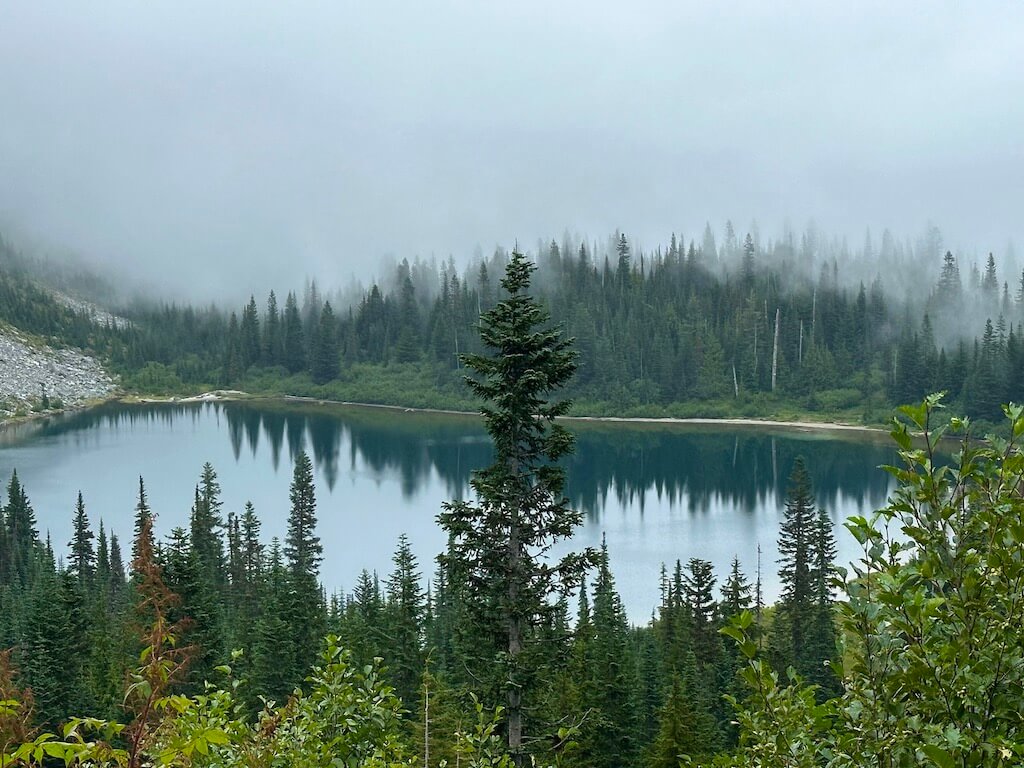
Read more on Washington travel:
• 11 Beautiful Places to visit in Washington
• What to Do on San Juan Island and how to catch the ferry
• 14 Things to do on Orcas Island in summer
• San Juan island whale watching tours
2. Consider a picnic in the Paradise Picnic Area.
The Paradise Picnic Area may be the nicest picnic area I have ever seen!
It’s a fairly large area with individual picnic tables nestled in their own tree-lined groves.
Each space feels intimate and private…Like the perfect camping spot (but you can’t camp here).
Another option for lunch (or dinner) is to skip the picnic area and head to the Paradise Inn Dining Room, near the Paradise Visitor’s Center.
This is a more upscale restaurant—think roaring fire and piano player in the evenings—at the historic Paradise Inn, which is also a lodging option in the park. (More on lodging below.)
You could also hit up the more casual Tatoosh Café, also located inside the Paradise Inn.
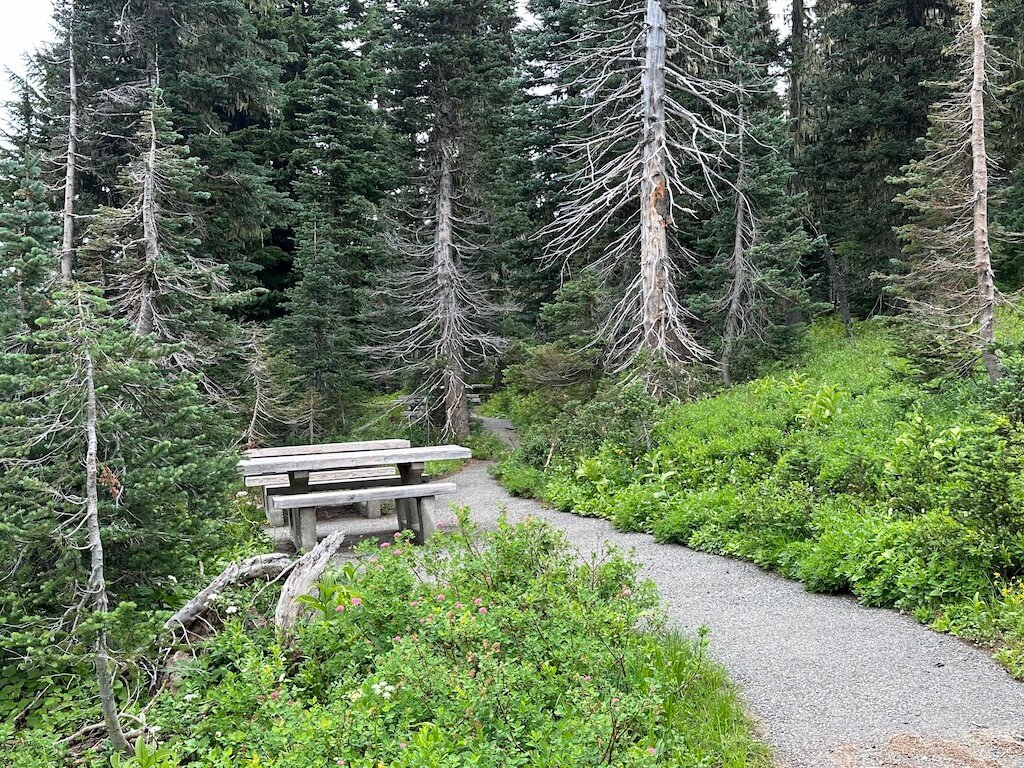
3. Hike the Nisqually Vista Trail
The Nisqually Vista Trail is a family-friendly one-mile, flat paved loop (but not wheelchair accessible due to a staircase at the entrance to the trail).
When we visited in late August, the wildflowers were everywhere! It will only take you about 30 minutes or so to do the loop so I highly recommend it if you’re here during wildflower season.
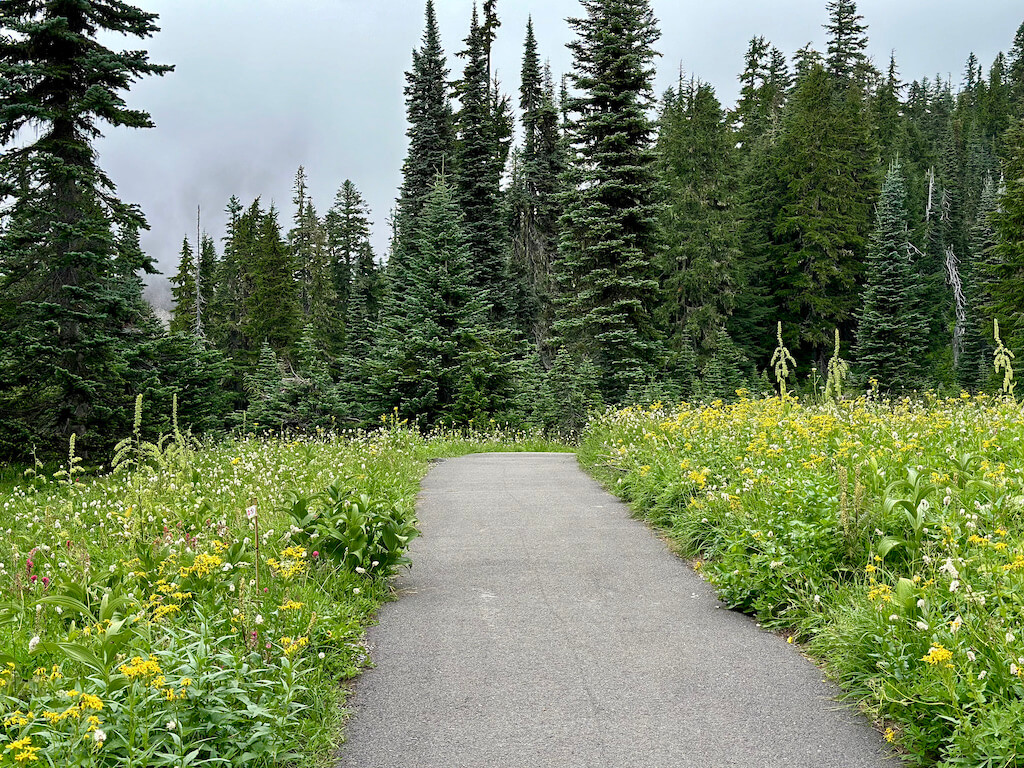
4. Visit the Henry M. Jackson Memorial Visitor Center
Up until now, you may have been wondering why timed reservations were required for the parks during high season. We saw very few cars in the park!
But once you pass the Nisqually Vista trailhead, it all becomes clear.
You are suddenly at the epicenter of the park, which is served by just one massive parking lot.
Plus, there’s the Paradise Inn. And dozens of epic trails all lead out of here, too. You’re likely to find a very full lot.
Parking tips: Here’s the challenge. The road to and from the parking area is a one-way loop that funnels cars in a big loop that takes 10 or 15 minutes to bring you back where you started.
So either wait until a spot opens up, be willing to park on the road past the lot and walk back a half mile or so or…and this would be my preferred option:
Park at the Nisqually trailhead which is quite close to the visitor center and likely will have more parking.
As for the lodge, you’ll find a small cafe with coffee, restrooms, informational displays, and rangers.
If you’re here for the wildflowers, they can tell you what’s in bloom where.
Fun side note: The visitor’s center is open year-round when Paradise becomes a snowy paradise for cross-country skiers, sledders, and snow-shoers.
It’s considered one of the snowiest places on earth, with an average of more than 53 feet of snow!
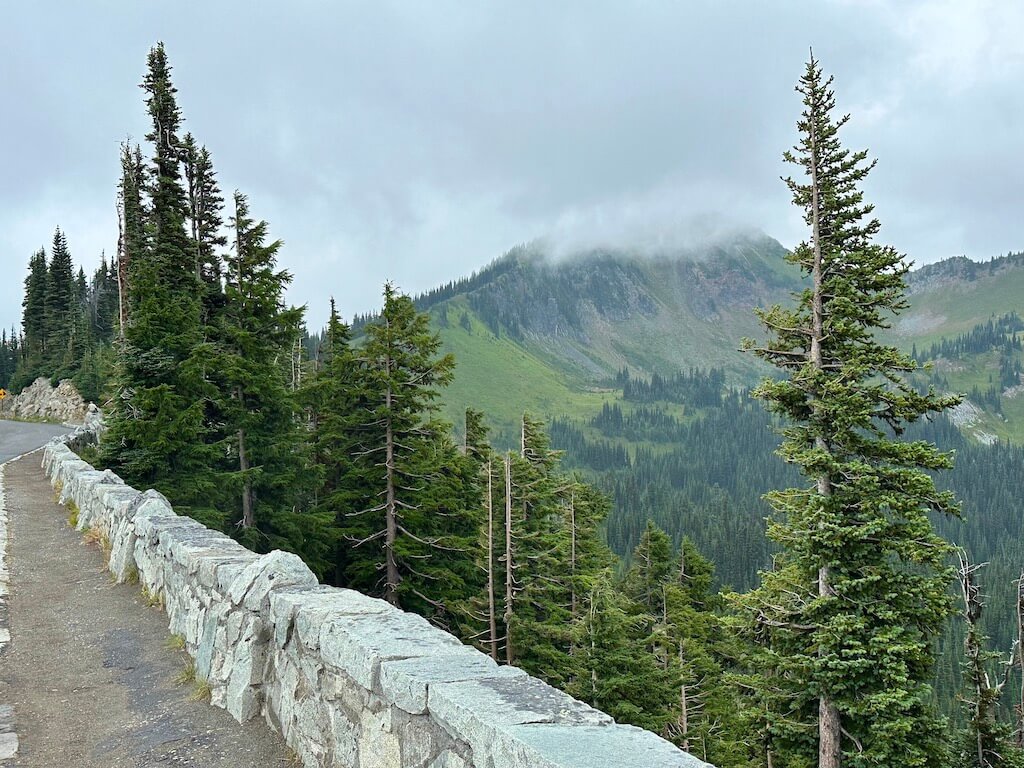
5. See Myrtle Falls
Just behind the Visitor’s Center, you’ll find a short quarter-mile paved path up to Myrtle Path. It’s quite a pay-off for such a short walk.
Myrtle Falls is absolutely gorgeous!
You can either turn around and head back to the Visitor’s Center or continue along the popular Skyline Trail if you’re up for a longer, harder hike.
The Skyline Loop is one of the favorites here in the park. It’s a 5.6-mile loop with 1,771 ft in elevation gain. Plan on about 3.5 hours to hike the loop.
Where to Stay
In the park: Paradise Inn is a popular choice as you’ll walk out your door for great hikes. No daily pass is required to access the Paradise corridor. Check out campgrounds here.
In Packwood: There are lots of cute cabins on VRBO if you decide to make Packwood your base. That’s what we did!
In Ashford: Check out Ashford accommodations on VRBO here.
6. Drive by Narada Falls
As you close out Day 1 in the park and head back to Packwood or Ashford, swing by Narada Falls for a quick drive-by.
This is one of the best falls in the park to view if you want to take just a few steps out of your car. The turquoise pool at the bottom is lovely.
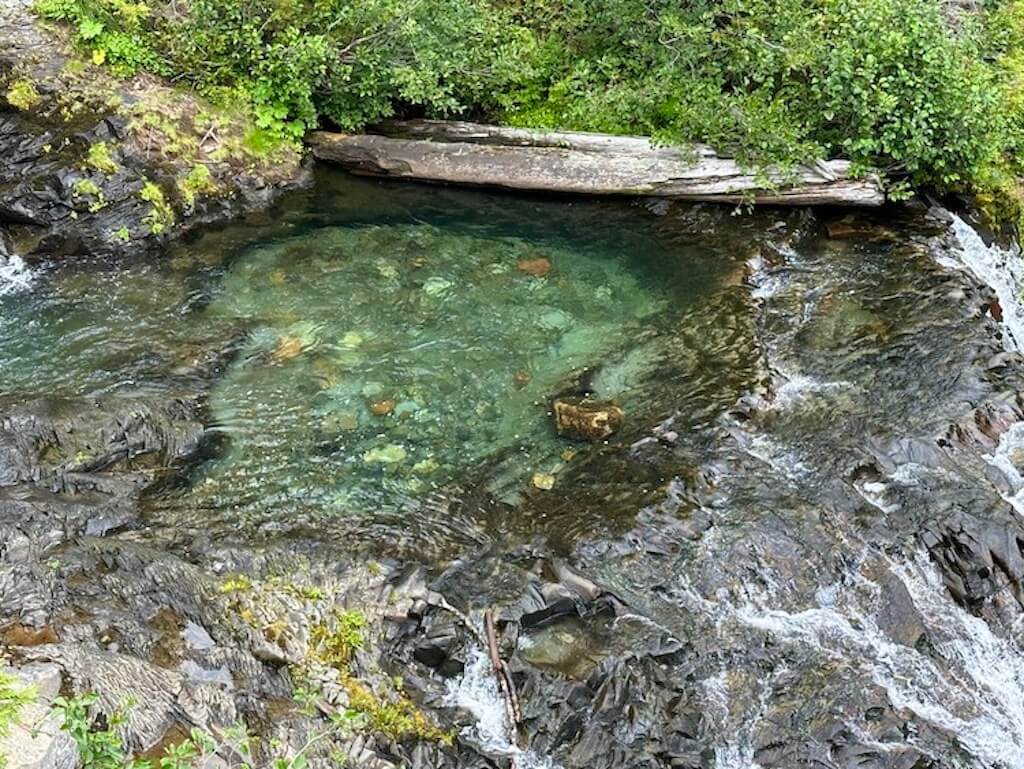
And that’s a wrap for Day 1. Time to head over to Packwood Brewing for dinner or hit the hot tub at the cabin!
Mount Rainier Itinerary: Day 2—The Sunrise Corridor (White River Entrance
If you’re staying in Packwood, start your day with coffee at Mountain Goat and then head into the park through the White River Entrance to access the Sunrise Corridor.
It’s about an hour’s drive to the park entrance today so plan accordingly depending upon your reservation window.
1. Head to Emmons Vista Overlook
Your first stop: Emmons Vista. There are trailheads from here, but at a minimum, plan to pull over for the gorgeous views (like the one below) right from the parking lot!

2. Stop by the Sunrise Visitor’s Center
The Sunrise Visitor’s Center is smaller and less impressive than the main visitor center on the Paradise Corridor but you’ll definitely want to stop for a map of the area and advice on hikes in this area from a ranger.
If you’re here in summer, for example, you’ll want to match your hike to what’s in bloom, along with the length and difficulty of hike you’re aiming for with your group.
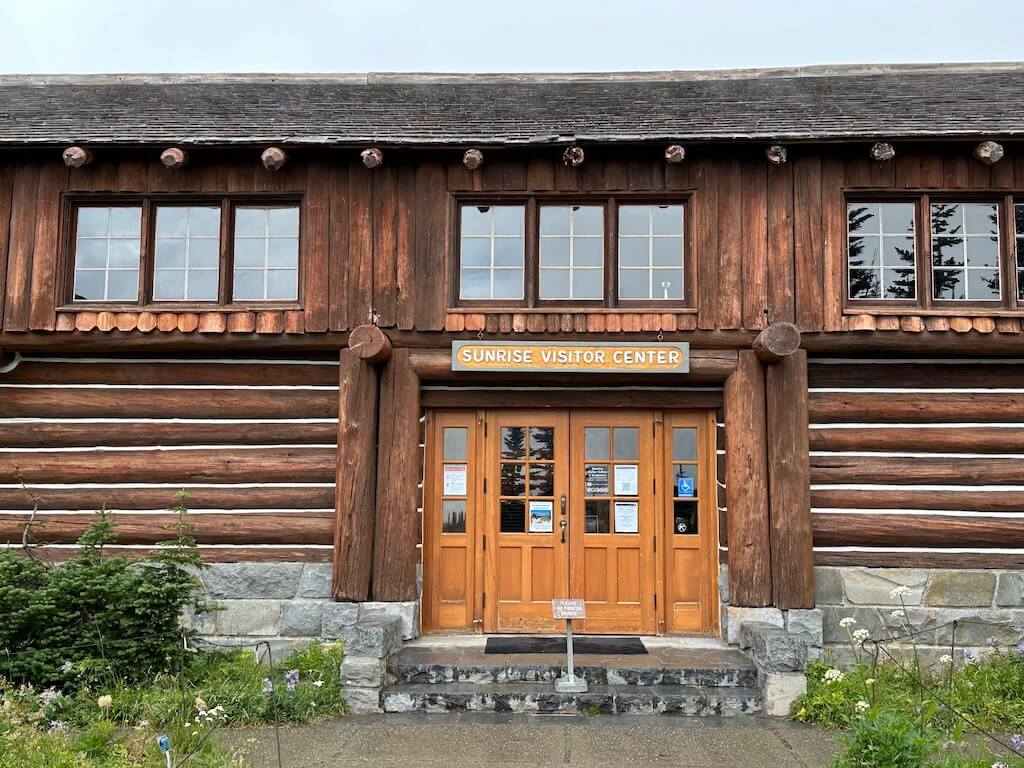
3. Hike the Silver Forest Trail
The Silver Forest Trail is an easy 2.7-mile, mostly flat wildflower-laden DELIGHT in late August. It takes a little over an hour to walk it.
The ranger at the visitor center wasn’t kidding when she said it was a great wildflower walk. Plus, the trailhead is conveniently located right out of the visitor center parking lot.
I shot the video below vertically (oops) so it’s going to be a little small, but thought it was still worth sharing!

4. Take the Mt. Rainier Gondola to the Summit House Restaurant
After your hike, hop back into the car for a short ride to the Mount Rainier Gondola and ride up to the Summit House Restaurant, near the Crystal Mountain Resort. Plan on a 45-minute drive.
If the sky is clear, this can be a bucket list experience as the 12-minute gondola ride whisks you over 2,400 feet to the summit for gobsmacking views of Mount Rainier and the Cascade Range.
Or so I hear.
On the day we went, the mountain was socked in with fog so there was not a lot to see.
Be aware that the gondola ride is also pricey, at around $50 per ride for adults (discounts for kids and seniors).
The Summit House Restaurant at the top offers average rather than outstanding meal options, but just being up this high is an experience!
Note that hours are limited during peak summer season (10 to 4 pm weekdays) and only open Friday to Sunday in late summer (i.e. September).
However, if the weather is good and the skies are clear, I’d take this ride again. Lots of outside seating would make the glorious views worth it!
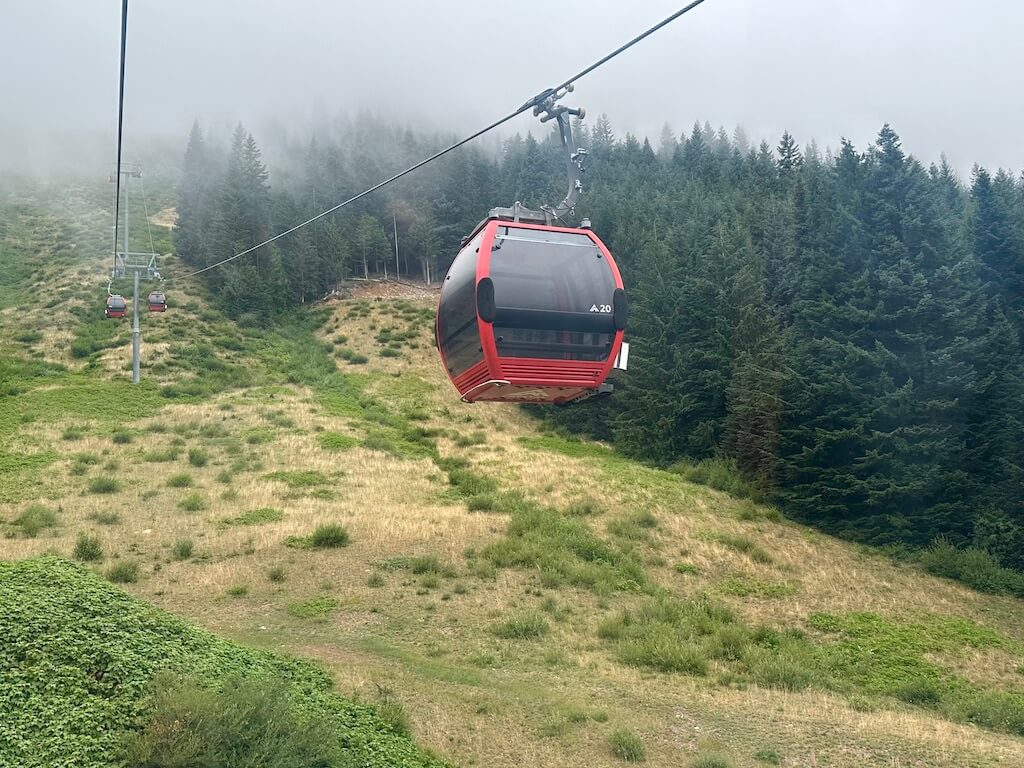
5. Hike the Grove of the Patriarchs Trail
As you make your way back towards Packwood late in the day, save at least a little time to hike the Grove of the Patriarchs Trail.
It’s an easy, flat 1.1-mile round-trip, just past the Stevens Canyon entrance. (Parking lot and restrooms available at the trailhead.)
This gorgeous grove of old growth trees is stunning. Some are a thousand years old.
Unfortunately, the trail was closed due to an old bridge over the river that needs to be repaired.
If this is still the case when you visit, you can still access the Eastside trail from the parking.
The Eastside trail meanders along the pristine Ohanapecosh River and through plenty of huge Douglas Firs and Big Cedars. You’ll see many that are more than 25 ft in circumference!
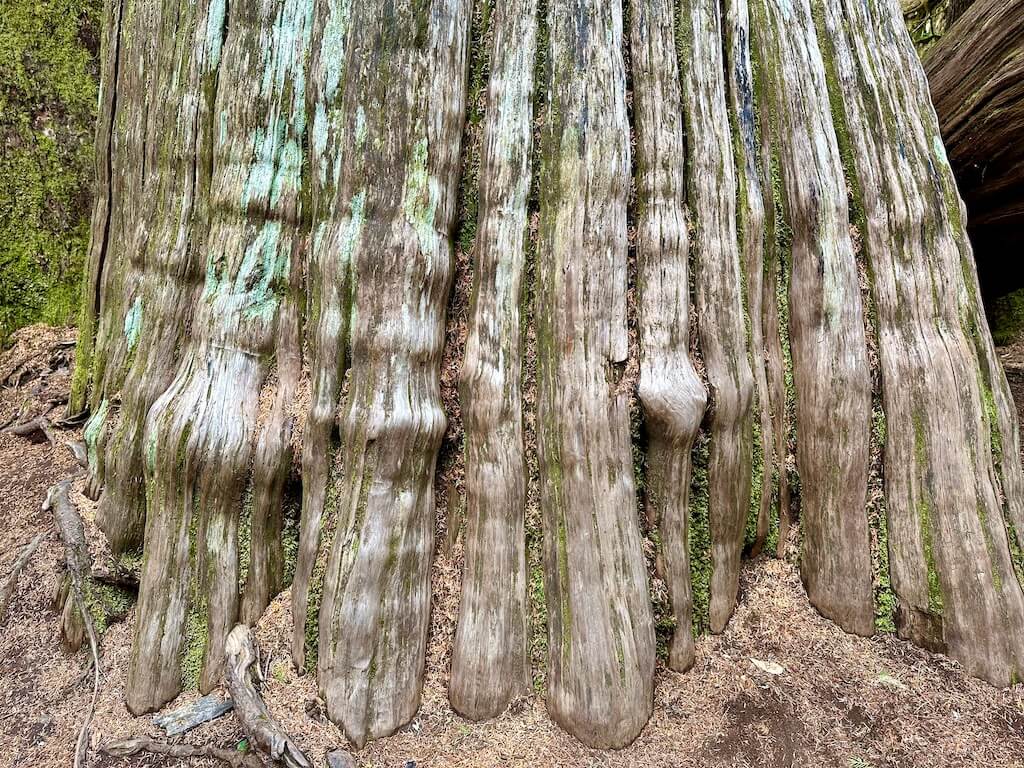
What if you have more than 2 days to explore Mount Rainier National Park?
Option 1 is to keep your base in Ashford, Packwood or in the park at Paradise Inn and plan more hiking. There are hundreds of trails to explore!
Option 2 is to move your base up to the Northwest Entrance at Carbon River. This area receives high rainfall and resembles more of a temperate rainforest.
Be aware though that, due to a 2006 flood, the road was washed out and is now closed to vehicles past the entrance.
Bicycles and pedestrians are permitted, however, onto the road which has been converted into a trail.
There are lots of great hikes at Carbon River I’d love to explore on a next visit!
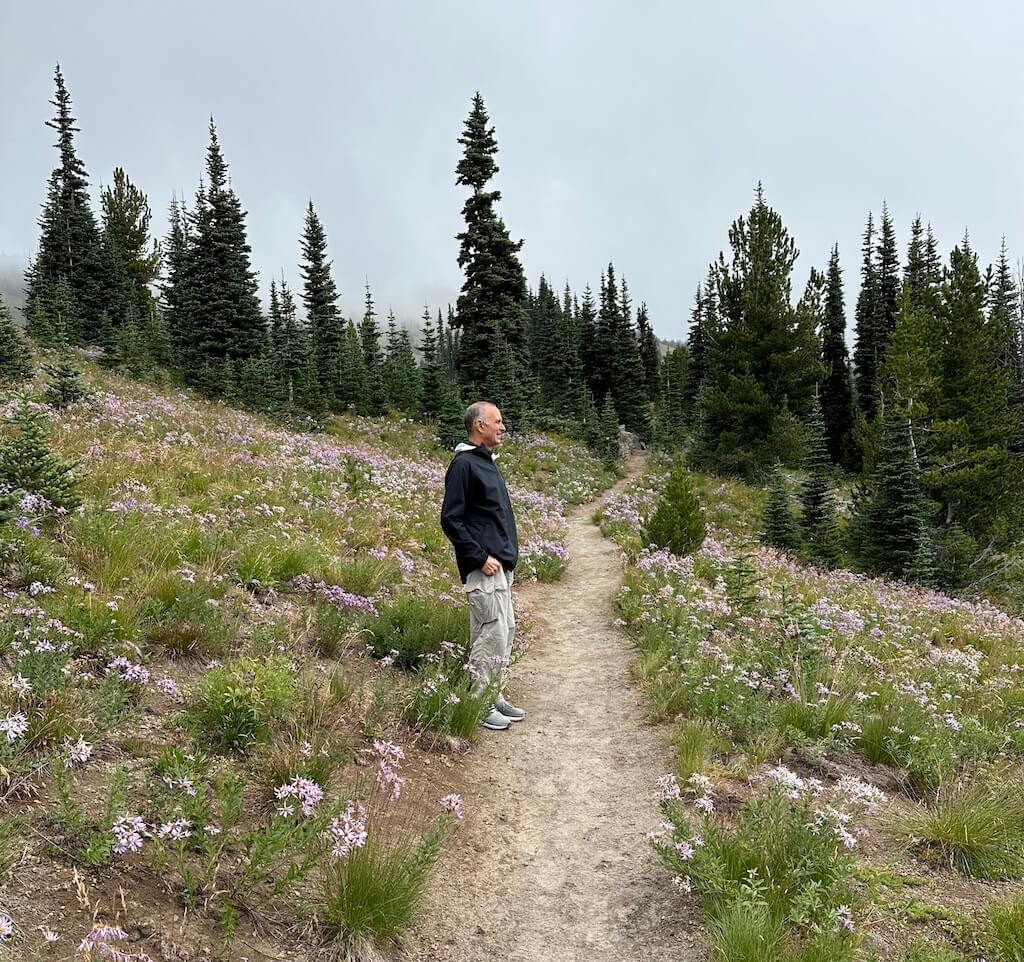
Like this post? Pin it to save it for later!
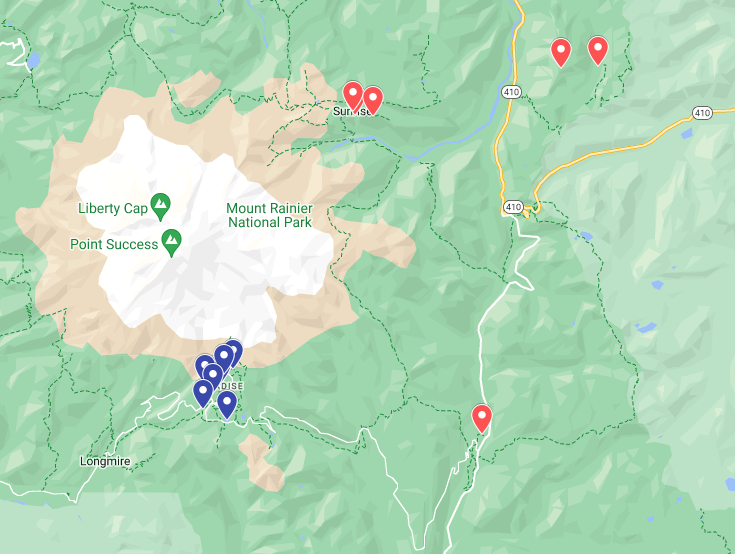
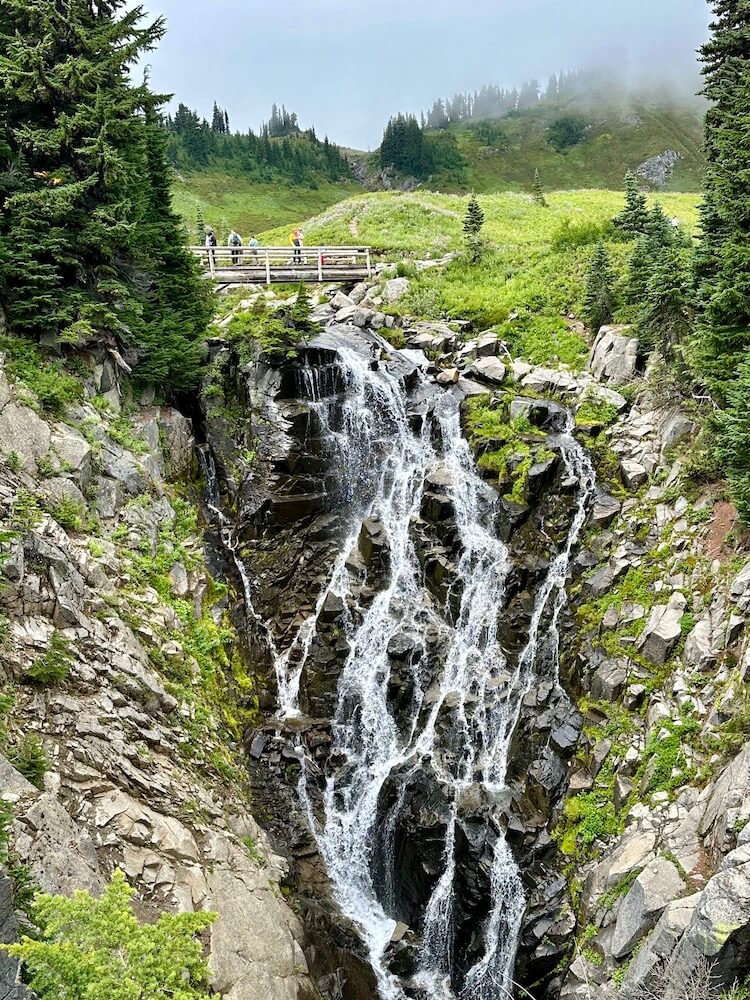
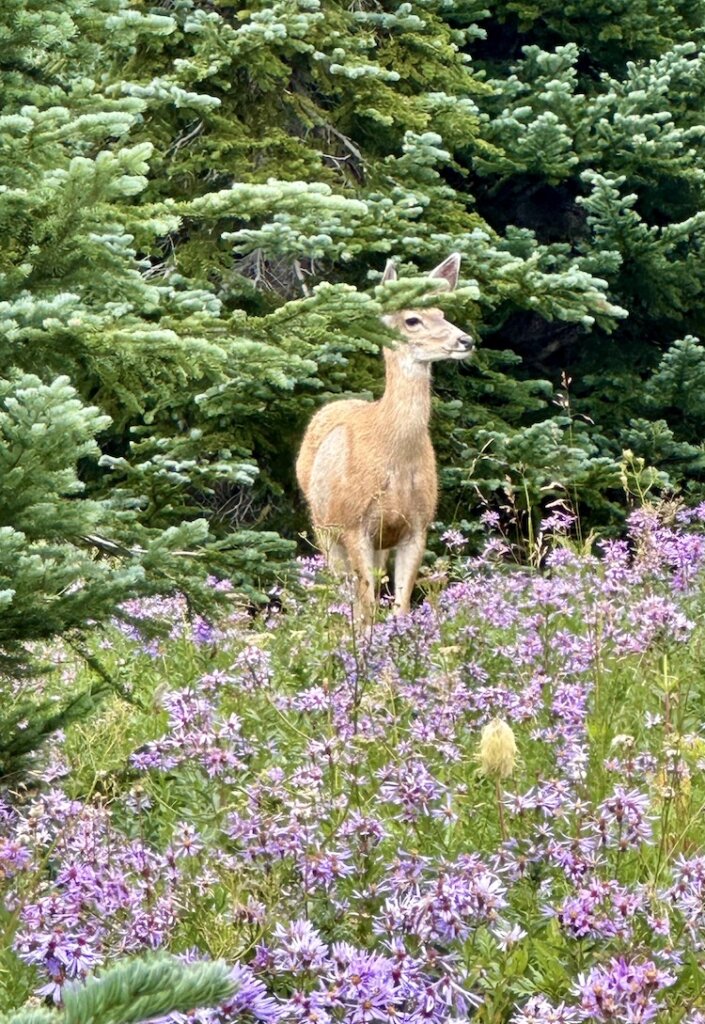
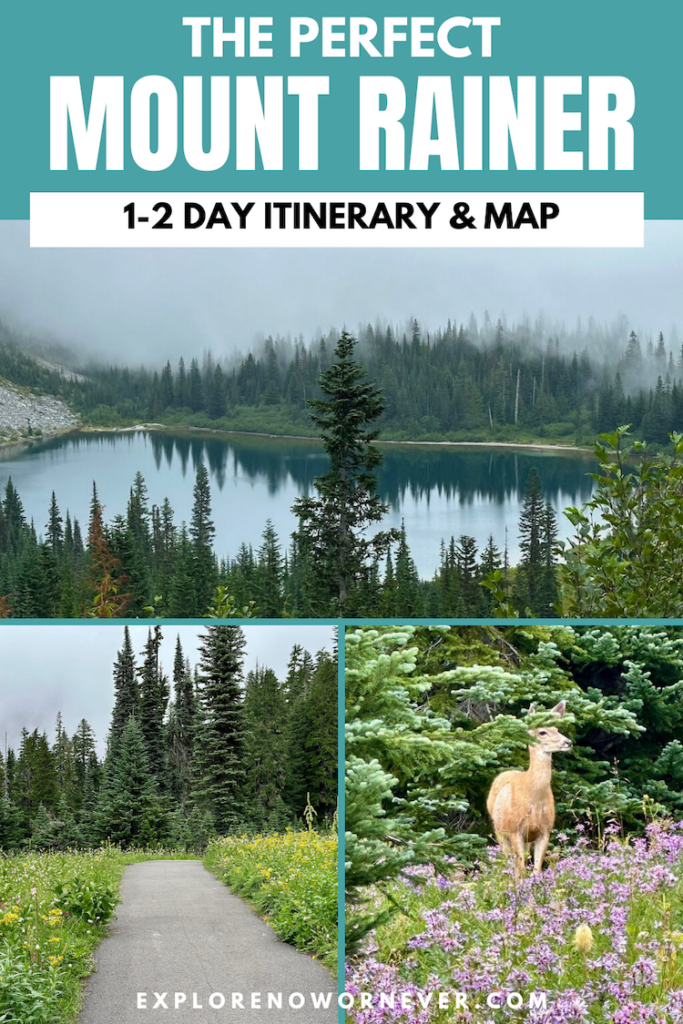
Leave a Reply